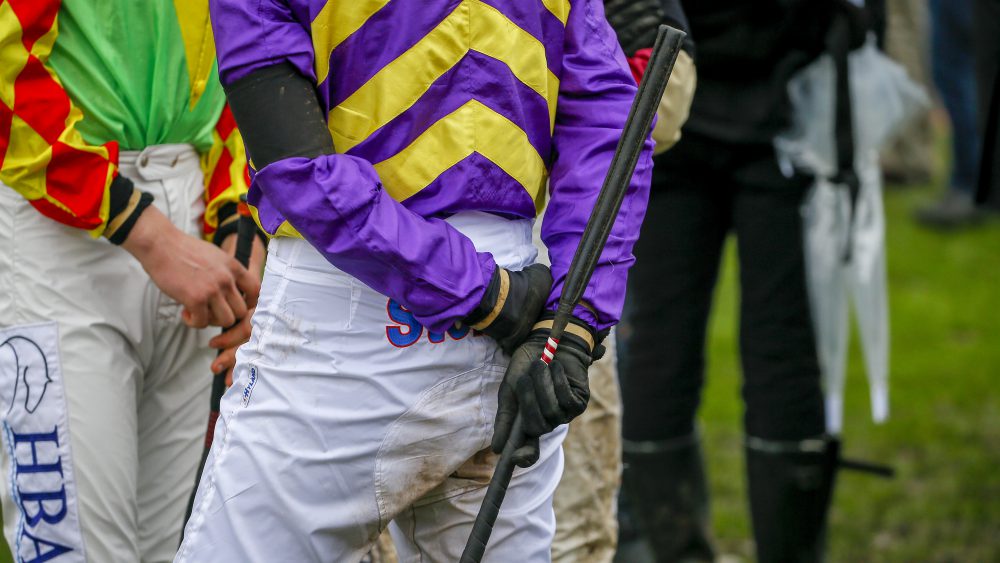Whip Consultation Steering Group Chair David Jones on whip rules

By David Jones, BHA Regulatory Independent Non-Executive Director, and Chair of the Whip Consultation Steering Group

No horse racing fan will have missed the issue currently dominating discussion around our sport – changes to the whip rules.
Given that use of the whip has often been a flashpoint for heated debate, it was inevitable that the adjustments to the rules we announced this week would provoke a strong reaction.
It was, sadly, predictable that the adjustments announced on Wednesday – in particular the removal of the backhand-only rule allowing jockeys to still use their whip in the forehand – would be presented by some as a “U-turn”.
However, the fact is the BHA Board, throughout an extensive period of analysis, discussions and then, yes, negotiations took all its decisions with one clear view in mind: to do nothing that diluted the principles defined by Steering Group.
It did so in the interests of our sport. Not for vested interests or lobby groups or recalcitrants but for the sport.
When the Steering Group concluded its thorough process, we all agreed on a set of objectives for revisions to the whip rules. These included changes to ensure a more considered and judicious use of the whip.
Those who describe this as appeasing those who are opposed to our sport in principle are missing the point: in the modern age, and with the leisure industry more furiously competitive than ever, perception is crucial.
This is not about persuading people who will never agree with our sport. It is instead about reaching those people who potentially could be fans of our sport now or in the future, but who are put off by the sight of the whip being used in its current form.
The fact is that the use of the whip in its current form is a major perception issue. There is plenty of research to show it is potentially the greatest barrier to engagement with racing. And these views are hardening among the public.
At the same time, the Steering Group was clear in its view that the whip is an essential aid to horsemanship, and that its use for encouragement, in a safe and controlled way, has a place in racing.
It is therefore about finding the right balance between respecting the importance of our customers views, and retaining the core principles of good, safe, race riding. This package of measures delivers that.
The BHA Board is clear that the new adjustments, when combined with the full package of measures, achieves the same objectives, just in a different way. The reductions in thresholds, removal of ‘discretion’ in stewarding, significantly increased penalties, the deterrent of disqualification and introduction of the whip review committee will all, when combined, achieve the objectives of improving whip use.
Presenting this as a “win” for jockeys undermines the incredibly hard work put in by people across the sport – including jockeys – to bring about positive change.
By taking proactive steps to address the issue of the whip, British racing has put its destiny in its own hands. The suggestion that external forces are not interested in the whip is simply not correct. The Labour Party’s last General Election manifesto included a pledge for an independent review of the use of the whip for encouragement.
This is an issue for all of us and I am encouraged to see jockeys’ comments that they take responsibility for whip use. Their message has been clear – the new rules are black and white, the penalties are hard but fair and necessary, and the responsibility for riding within the rules now rests with them. I hope and expect to see the new rules and penalties respected.
It has been suggested that the backhand-only rule was obviously flawed and drawn up by suits in High Holborn. This is not true. The fact is the suggestion of the backhand-only rule was originally brought for discussion to the Steering Group by members who work as participants in the sport..
It is worth remembering that the Steering Group which made the initial recommendations was made up of representatives from across the industry. It included top trainers, jockeys, owners, breeders, racecourse executives, stable staff, racing media and individuals with an intimate knowledge of betting.
It also included perspectives from parliamentarians, vets and recognised animal welfare charities.
No better or more appropriate group of people could have been assembled to make these proposals.
The Steering Group’s initial proposals included a reduction in thresholds for use. But at the last minute a request was made to consider a different approach based on a backhand-only rule.
When this was announced last July it was generally well received. While some individuals lodged concerns, the overwhelming response was acceptance.
There followed further, extensive technical discussions during which there was no shortage of time for jockeys or their representative body to raise concerns.
But an extraordinarily challenging situation was created when, within days of the new rules being implemented, a swift and strong groundswell of opinion suddenly emerged from jockeys.
New information was presented that some jockeys, for a range of reasons, were having difficulty in adjusting to a technique applying the backhand grip only.
The BHA Board could have dug its heels in and said it was too late. That would have been irresponsible. Instead the Board listened to the overtures from jockeys and swiftly and decisively adjusted the proposals while keeping those core guiding principles in mind.
But we cannot allow this type of scenario to unfold again. This was a view made clear by the BHA Board and one accepted by the PJA. I am pleased to see that the PJA has publicly committed to review its consultation processes.
Any sport, especially one with the heritage and tradition of British racing, will always find change difficult. We understand this, and it was never going to be easy. This, however, should not make us afraid to bring about change for the good of the sport.
